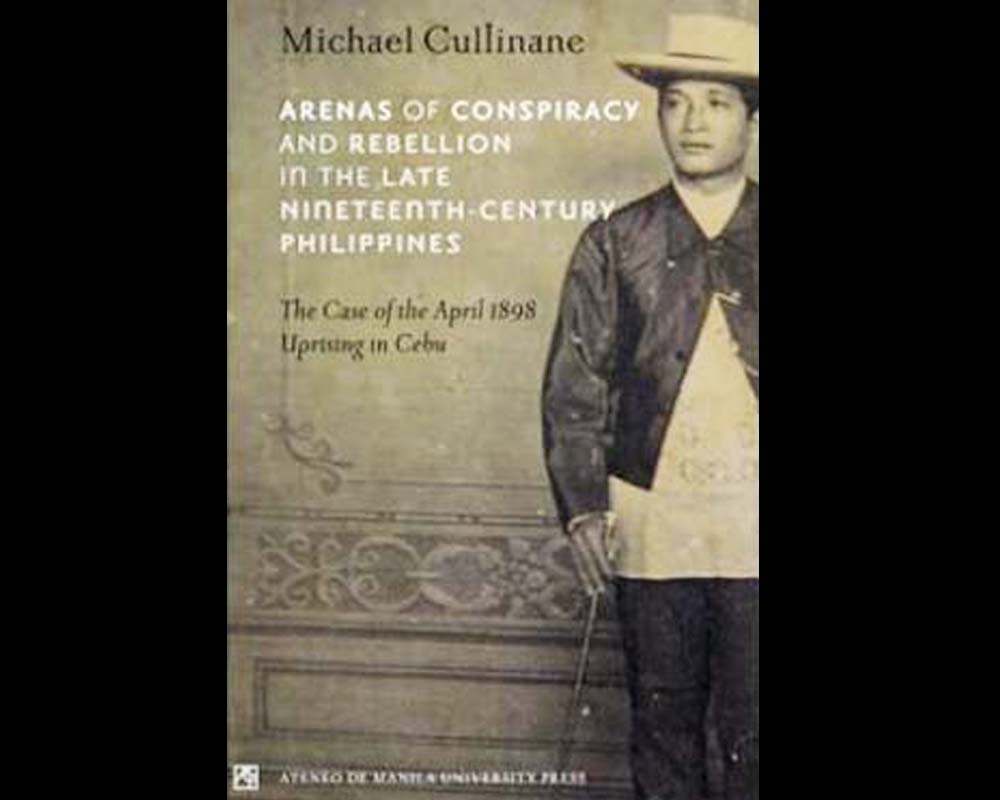The Ateneo de Manila University Press recently released Michael Cullinane’s new book, Arenas of Conspiracy and Rebellion in the late Nineteenth-Century Philippines: The Case of the April 1898 Uprising in Cebu.
According to the back cover blurb, Cullinane’s new title “explores various aspects of late 19th-century Philippine society in an effort to locate the major ‘arenas of conspiracy and rebellion,’ especially in the 1890s. While analytical focus is on the 1898 anti-Spanish rebellion in Cebu City, the study is intended to draw attention to those changes and developments as they impacted the entire archipelago and, in particular, to provide a socio-political framework to better understand the membership of the Katipunan (1892-1896).”
The chapters “Who were the Katipuneros?” and “Who Revolted in Cebu: Assessing the Data” embody an important aspect of Cuillinane’s research. For me, the data he gathered on the katipuneros in Cebu are the most interesting. They are rare and precious.
An appendix of the book, “Bio-sketches on the 1898 Rebels of Cebu,” lists 133 (not 132 as stated on p. 96) Cebu City residents who were identified as katipuneros in 1898. Of the 133, we find 22 Chinese mestizos or members of Gremio de Mestizos.
They were:
- Abellana Y Tallo, Gonzalo
- Adarna Y Ramos, Bonifacio
- Adarna, Graciano
- Borromeo Y Rubi, Florentino
- Cabibil, Apolinar
- Climaco, Alejandro (leader)
- Cui, Bruno
- Herrera, Lucio (Lucio Herrera Uy Chizon) (Chino Cristiano)
- Lago Y Rubi, Godofredo
- Ledesma, Agustin
- Ledesma, Gervacio M.
- Machacon, Abad
- Machacon, Luciano
- Machacon, Nicomedes (leader)
- Magallon Y Cuico, Roman
- Montayre Y Lopez, Manuel
- Regis Y Rebollo, Eliseo
- Regis, Olimpio
- Sanson, Brigido
- Sanson, Pedro
- Tenchaves, Onofre
- Veloso Y Rojas, Filomeno
In effect, Chinese mestizos made up 16.5 percent of the Katipunan membership in Cebu at the time. It is proof that Chinese mestizos actively participated in Philippine revolution against Spain. It is rare to find quantitative data on the role Chinese mestizos played in the Philippine revolution. This might even be the first of its kind.
Another interesting point: Among the 22 Chinese mestizo katipuneros in Cebu, only one had the typical monosyllabic Chinese surname: Bruno Cui. One cannot tell right away that the remaining 21 were Chinese mestizo through their surnames. Their Filipino surnames showed they had integrated to Philippine society and had been Filipinized. Lucio Herrera’s Chinese surname, Uy (黃), was enclosed in parentheses. The book identifies him as a Chino Christiano.
Cullinane teaches Southeast Asian history at the University of Wisconsin-Madison, where he has also been the associate director of the Center for Southeast Asian Studies since 1991. He has conducted research on Philippines history for over 40 years and has published on a number of topics, including Ilustrado Politics (2003) as well as a number of articles on the 19th and 20th centuries, with emphasis on the city and provinces of Cebu.
We truly appreciate Cullinane’s well done research on the katipuneros in Cebu. — First published in Tulay Fortnightly, Chinese-Filipino Digest 27, no. 4 (July 22-August 4, 2014): 5.
